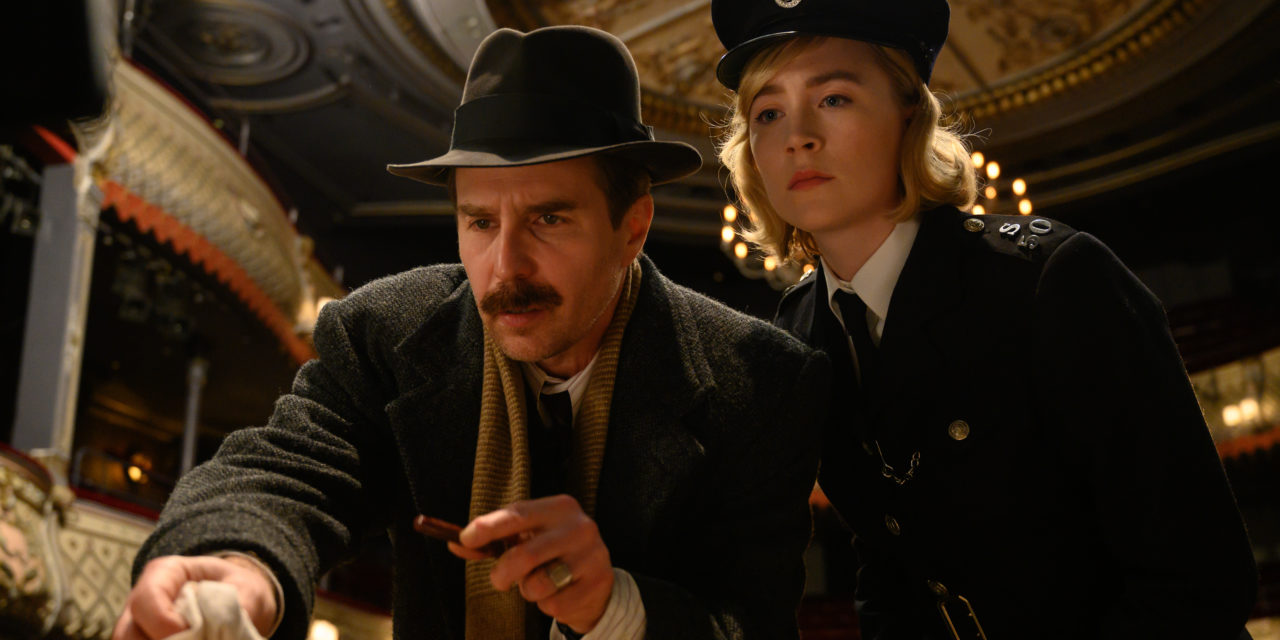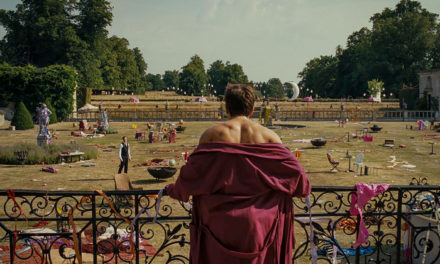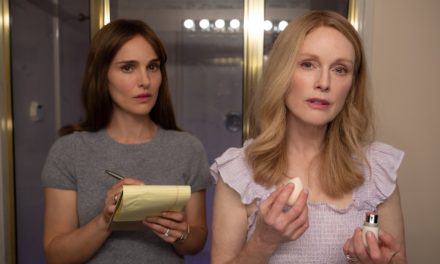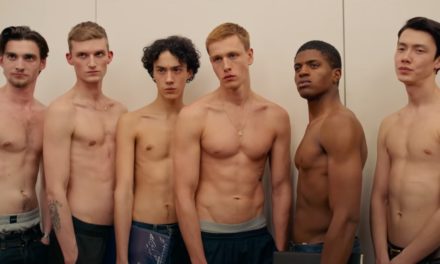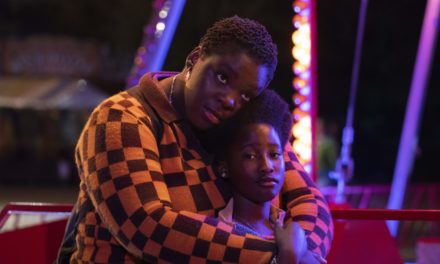Agatha Christie could never have suspected her play ‘The Mousetrap’, which debuted in 1952, would still be performed to this day . The play has been performed over 28,000 times since first gracing the West End 70 years ago, becoming the longest ever continuously running piece of theatre. The Mousetrap’s remarkable success speaks to the longevity of the who-dunnit formula more broadly. Unsuspiciously so, the genre is one of purely populist sensibilities, everyone knows and accepts its palatable structure. The who-dunnit is one of the few genres that has never gone away, whether disguised under Phillip Marlow’s trench-coat or Peirot’s numerous ludicrous moustaches. More recently we have seen Rian Johnson breath new life into the formula with ‘Knives Out’ and looks to do so again with his ‘Pokerface’ series for Peacock. Each iteration of the murder mystery is itself a self conscious exercise within a stringent set of tropes that must time and again find a way to surprise the audiences once the murderer is revealed. It is perhaps for this reason, the genre itself being reconfigured innumerably, that ‘See How They Run’s parody feels rather sterile.
“Each iteration of the murder mystery is itself a self conscious exercise within a stringent set of tropes that time and again must find a way to surprise […] audiences.”
After a murder on the set of ‘The Mousetrap’ Inspector Stoppard (Sam Rockwell) and Constable Stalker (Saoirse Ronan) are dispatched to investigate. As the mystery unfurls all characters seem aware of the tropes of the murder mystery present in the play which is now being reenacted in real life proceedings. The initial murder, the detectives arriving on the scene, the red herrings, the climactic parlour room reveal are all commented on as they occur to an exhaustive degree. Perhaps if the film wasn’t so focused on being above the genre it shows very little affection for and played these moments more straight it would allow the parody to feel less half-hearted. This knowingness extends to the performances in which everyone is playing up the silliness, with the exception of Ronan who does quite an excellent job playing the comedy more straight and in doing so is able to conjure the few genuinely funny moments the film has to offer. Rockwell is particularly awful as he does his best Peter Sellers impression and much of the ensemble isn’t given nearly enough to do or are fleshed out enough to suspect any of them. Within its potential suspect are some really excellent actors like Reece Shearsmith and Sian Clifford who mostly hug the walls whilst the film goes through the motions. The appearance of Tim Key as the police captain I felt was a very nice touch but again was hoping he had a bit more to do.
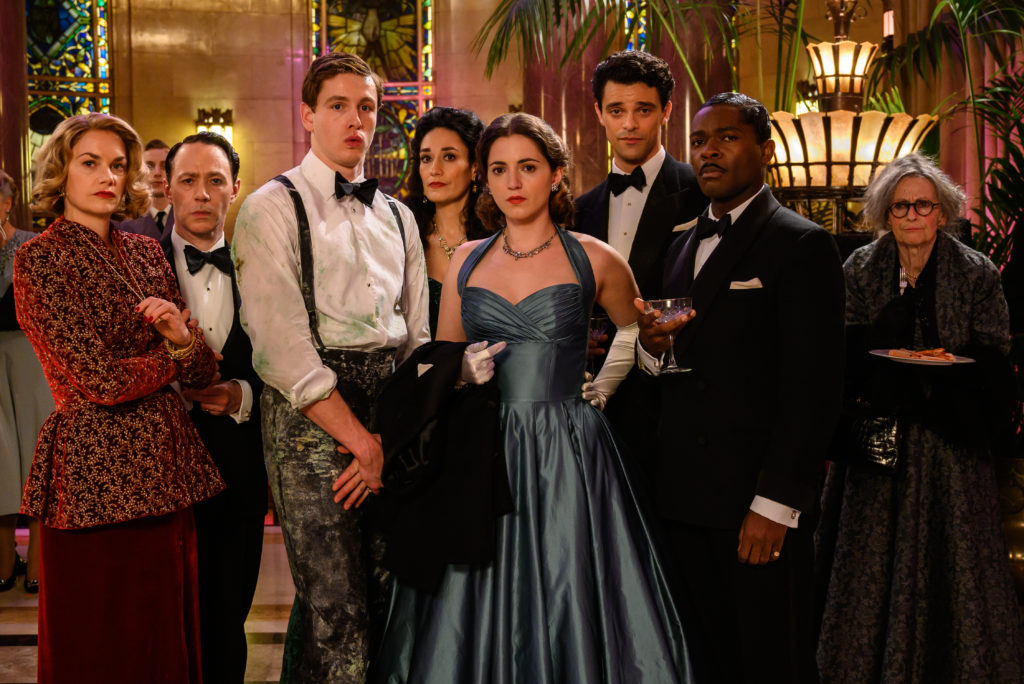
The film is Tom George’s cinematic debut after heading the largely successful ‘This Country’ for the BBC. Outside of the tone and all too winking set up, both of which sort of hold the film captive, there is a lot to like about George’s direction. The film is photographed beautifully looking gorgeous in its period glamour. The use of locations are also fantastic, the production using the Old Vic as the interior of the play/crime scene which looks phenomenal as does the savoy hotel, both of which were able to be filmed in, says George, due to the pandemic leaving them largely empty. The way in which the sets are dressed and the effort put into the costuming work in tandem to create a really vibrant aesthetic that pops from the screen.
Tom George’s direction outside of the performances must also be praised setting up some clever compositions, the way in which he is able to cohesively stage his large ensemble is no easy task and has a great eye for the ways in which characters enter and exit the frame. I hope he can work on a future project that is perhaps more configured to his tastes. Going into the film I was assuming it would be a shallow exercise in replicating a particular Wes Anderson-ism and though these stylistic elements are present George is able to bring in his own style and draw more deeply from 40s and 50’s British cinema, I was often reminded of the Ealing films of Robert Hamer and Basil Dreaden with a bit of Hitchcock thrown in for good measure. Not all of these stylistic choices work as an insistence on using split screen felt rather jarring and when not watched on a large cinema screen is near impossible to always make out what is going on, a similar effort to incorporate such an effect was made by Ben Wheatly in his similarly inoffensive but largely forgettable ‘Free Fire’ and it never seems to come out the way the director intends. Although not particularly loving ‘See How They Run’ it is a brisk and often times enjoyable experience even if it doesn’t necessarily come together as a cohesive whole. Its the sort of film you could watch with your family at Christmastime and everyone would have a completely fine experience only to never discuss or think about it ever again.

